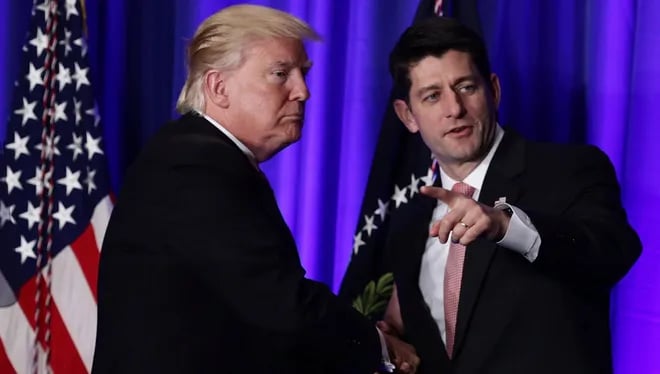The GOP's Internal Strife: Paul Ryan vs. Donald Trump


Introduction
The recent comments by former Republican U.S. Speaker of the House Paul Ryan have reignited discussions around the internal dynamics of the Republican Party. Ryan, who left Washington, D.C., in 2018 after the Republicans lost control of the House during Trump's first two years, has voiced stark warnings about a potential Trump reelection. His statements and the subsequent reactions from President Trump highlight ongoing tensions within the GOP.
Paul Ryan's Warning
Paul Ryan recently remarked that if Donald Trump were reelected as president, the United States would face nothing but "death, taxes, and weird stuff." Such a statement encapsulates Ryan's concerns about Trump's leadership and its implications for the country. Ryan's departure from politics in 2018 came after a period when the Republicans controlled all branches of government, yet still faced significant challenges and controversies.
Trump's Retort
In response to Ryan's critique, President Trump labeled him a RINO (Republican In Name Only). This term has been frequently used by Trump to describe Republicans who do not align with his views or leadership style. Trump's dismissal of Ryan's comments underscores the deep-rooted divisions within the party, where loyalty to Trump has become a litmus test for many.
The Republican Party's Dilemma
Paul Ryan's counter-response was equally pointed, asserting that anyone who did not bow down to Trump was branded a RINO. This back-and-forth highlights a critical issue within the GOP: the struggle between traditional conservative values and the populist, often controversial, approach championed by Trump. The internal conflict raises questions about the party's direction and its ability to unify around a common platform.
Conclusion
The exchange between Paul Ryan and Donald Trump is more than a personal spat; it is indicative of a broader ideological battle within the Republican Party. As the GOP navigates its future, the question remains whether it can reconcile these differences or if it will continue to be a party marked by division and allegiance to a figure as polarizing as Trump. Whether the party can regain a unified and principled stance is a matter of significant importance for its future and the broader political landscape.
